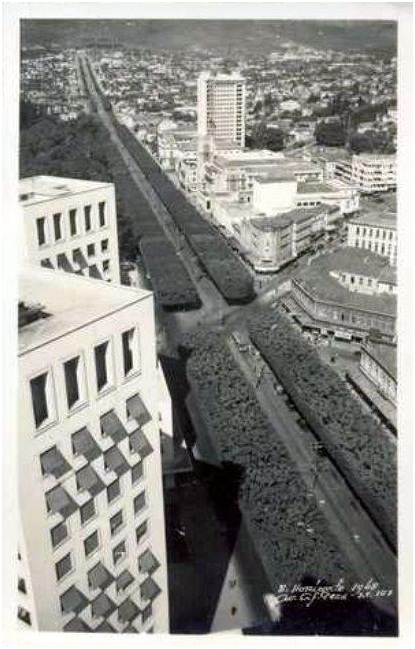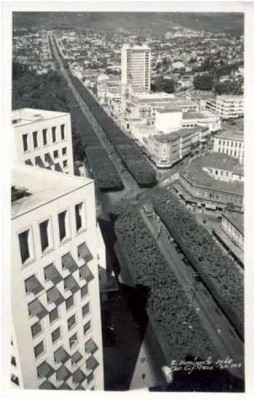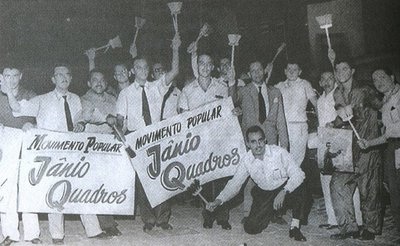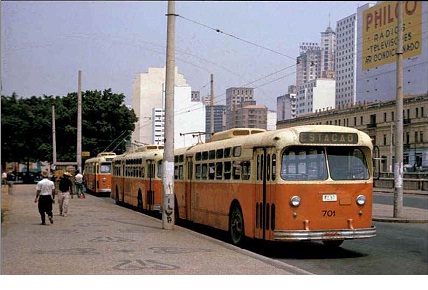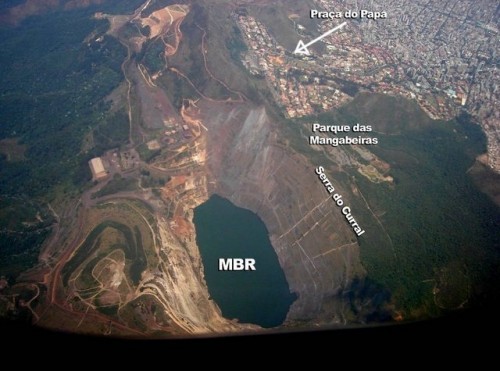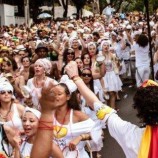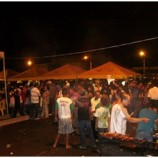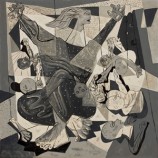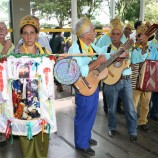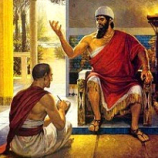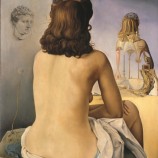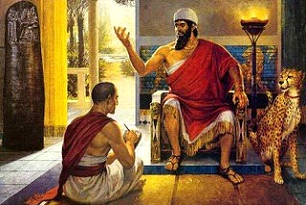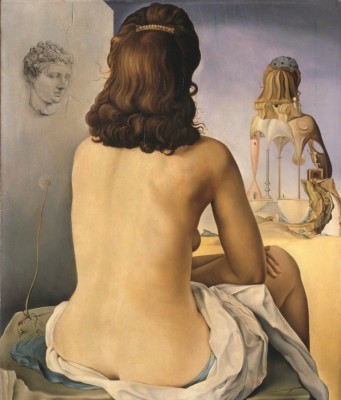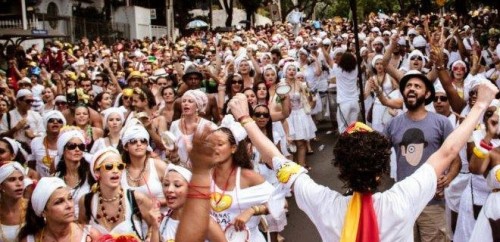Belo Horizonte, the capital city of Minas Gerais or of the Alterosas, the Mountain State, is better known today as BH or Beagá.
In 1960, the city began to change. The population increased rapidly, it was the rural exodus, mostly emigrants coming from the interior of the State. Many were students seeking a university education. The Student Movement was seething at this time. Students took to the streets in protests, political campaigns, creating commotions like that of the campaign for the Presidential election, where the few existing Communists, with little golden sword lapels, supported General Lott while a mass populist, also with little golden brooms on their collars, attacked violently Lott’s committees, the coalition parties PSD, the Social Democratic Party, and PTB, the Brazilian Labor Party, and drooled over the candidate backed by the conservative and moralistic UDN, the Democratic National Union. The formal workers and of the periphery organized themselves. I remember the UTP, Union of Periphery Workers, and the banks going on strike, completely closing for several days causing national repercussions. Not to mention the staff of the nearby industrial city of Countagem that began the process of unionization and social awareness that was reflected in our lives. Even the taxi drivers went on strike.
Mayor Aminthas de Barros, a PTB affiliate, received on 1 January 1960, the City Hall with finances more or less improved and public services in order. This was the information that “The Cruzeiro”, the most important national magazine showed in two sequenced editions as front page news. Former Mayor Celso Azevedo Melo was DNU. Belo Horizonte, the first planned city of Brazil, whose broad, tree-lined avenues were inspired by the U.S. capital, Washington DC, was considered a model city in administration.
Public transportation was greatly improved: the old trams, although still running, grew increasingly unsatisfactory and disabled. Trolleybuses, buses powered by electricity, quiet, smooth and clean were the latest technology, but the DBO, the Department of Bus and Tram, were still lacking in competency. The system had only eight trams in circulation, which tended to the most populated districts. The trolleybus were then in operation. The buses were already in the hands of unscrupulous dealers who by economic motivation began to replace the old outdated buses with their elongated front hoods for the modern and comfortable “Monoblocks”, whose name came from their Mercedes Benz model engine. Its main feature was a very soft suspension. When the driver braked it oscillating vertically for a few moments. The passengers, many from the rural areas and accustomed to horseback riding, commented: “This little car sure is fine in the saddle!”
In 1969, during the darkest times of the military rule, Souza Lima was appointed mayor, state governors and mayors of state capitals were not elected. The trolleybus system was abolished and 50 cars were sent to Recife, Pernambuco, who in turn sent the equivalent number in buses. The difference was that the trolleybuses were operated by a public company, DBO, which was closed, while normal buses were operated by private companies. Comments that never left in the mainstream media were that the exchange was made under pressure from bus dealers, who were the major financiers of election campaigns and whose relationship with politicians has always been marked by a lack of transparency in our fragile democracies. This act by the mayor was allowed by the ideology of the military that encouraged the privatization of everything possible.
In education, the city proceeded with the renovation of the municipal school, where shone the brilliant teachers Guilherme Lage, Djalma Guimarães, geologist, and Doctor José Israel Vargas, a chemist who created the Center of Technology of Minas Gerais, CETEC-MG and first Secretary of State of Science and Technology of Minas Gerias, and later he occupied twice the Federal Ministry of Science and Technology. He was the first Brazilian to finish his doctorate at the prestigious University of Cambridge, England.
In January 1963, Jorge Carone is elected mayor; he was of the PTB, which was held by the military and by their ally, the governor of Minas Gerais, Magalhães Pinto, as an opponent. Carone was sacked by the council in mid-term, in late 1964, the year of the military coup. His administration was noted for its controversy. In November 1963, he ordered all the trees on Afonso Pena Avenue to be cut down, saying that they got in the way of traffic, and had a disease that threatened to destroy all the trees in the city.
In 1969, the year of the military regime’s rise alongside the enactment of Institutional Act No. 5, AI-5, which closed the National Congress temporarily and allowed the repeal of mandates of many of its members, the appointed governor Rondon Pacheco, who never had links with Belo Horizonte and was a signatory of the AI-5, authorized the destruction by way of the mining company MBR, now part of the company Vale do Rio Doce, of the Sierra Corral where the town of Del Corral King originated and which was the city’s main postcard image.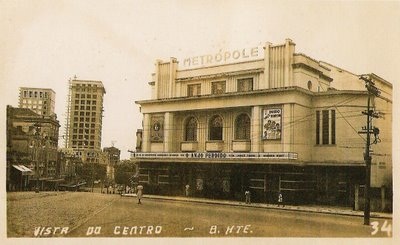
Another attack that we cannot forget was the purchase of another postcard image of the city, the Metropolis Cinema, Bradesco Bank, which was knocked down and a deplorable administration building built in its place. At that time, besides the atrophy of society by the military regime that fiercely repressed any form of criticism, there was minimal ecological or environmental awareness and to the importance of historical and architectural heritage.
It was a harbinger of the “Economic Miracle”, in which the rulers sought immediate results, not interested in social, environmental or cultural ones. In four years the mock-up was over and done with, which led the military to launch its strategic withdrawal from the scene with its “Open Policy”. It was a time when the BH after its 60 years began the formation of its imaginary, as the song “Sampa” by Caetano Veloso goes, “Happy Dream of a Town”.
Related Articles


